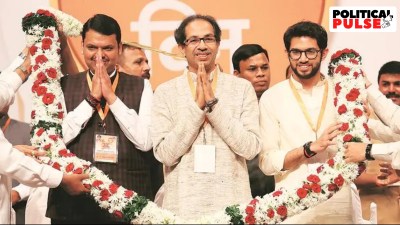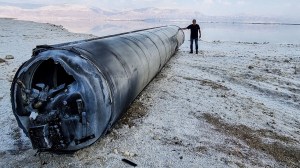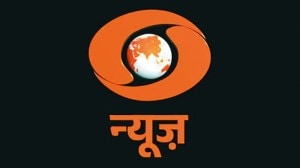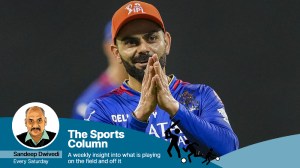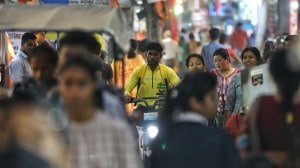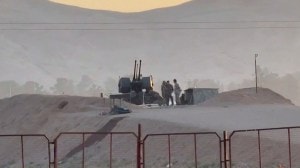- India
- International
Explained: Who are the Vanniyars, and why did Madras HC quash TN govt’s quota to them?
The Madras High Court has quashed the 10.5% special internal reservation provided by the Tamil Nadu government to Vanniyars, a most backward caste (MBC). What did the court say?
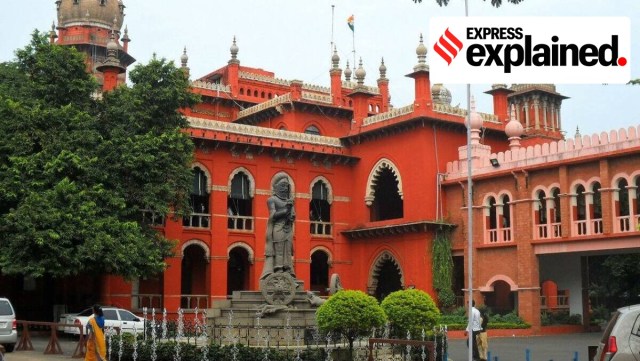 The Madras HC quashed the 10.5 per cent special internal reservation provided by the Tamil Nadu government to Vanniyars (File Photo)
The Madras HC quashed the 10.5 per cent special internal reservation provided by the Tamil Nadu government to Vanniyars (File Photo)The Madras High Court on Monday quashed the 10.5 per cent special internal reservation provided by the Tamil Nadu government to Vanniyars, a most backward caste (MBC). The court said the quota was ultra vires to the Constitution and noted how the state government – both the previous AIADMK that made the first move and DMK that implemented it – went ahead without any “quantifiable data” to support the decision.
Why did these two parties go ahead with the move without backing of a caste census?
Both the AIADMK and DMK decided to go ahead with the special quota for Vanniyars with an eye on two elections – the last assembly polls for the then ruling party AIADMK, and the recent local body polls for the current DMK government.
Even as both the parties have had strong legal and political opinions internally against going in favour of a particular community without the backing of a justifiable data or caste census, leaders from both parties who spoke to The Indian Express suggested that there is no need to take it too seriously.
A senior AIADMK leader said the legal opinions were there, warning that it will be struck down, but the ‘more important thing for us was to do something for them’. For DMK too, a party that is carefully handling all communities including minorities and Dalits, a senior leader said there was nothing to lose by implementing it as an order because a denial approach would have turned the community against the ruling party. “Everyone knows that we need a caste census to proceed with such a special quota implementation. But, in public perception, it is all about what we did. Now the blame falls on the court, not DMK or AIADMK,” the leader said.

Interestingly, S Ramadoss’ PMK, which is seen as a party backed by the Vanniyar community and was at the forefront of demanding the special quota, did not make major gains in spite of the favours they gained from the government. This is because the changing political scenario is making it tough for smaller parties to leave a mark with or without community support. It is almost a necessity that one needs a banner of the powerful party like the DMK or the AIADMK to win elections, and it also becomes a necessity of these two parties to make it appear that they did something for Vanniyars even as they knew that it was bound to fail before the court.
How powerful are Vanniyars?
Even as backward communities such as Thevars and Gounders are largely seen as Tamil Nadu’s socially and politically powerful communities, Vanniyars were one of the largest and most consolidated backward communities that had a consistency in retaining political representation from 1940s and 1950s.
In the political act of bargaining for community representation too, Vanniyars had been far ahead of other backward and Most Backward Communities (MBC) for decades, which includes their organised state-wide agitations in the mid-1980s demanding an exclusive 20 per cent reservation in the state and 20 per cent in central services.
Even before these agitations, Vanniyars weren’t at the receiving end but a numerically strong party, enjoying political powers for several years, thanks to Vanniyar leaders such as S S Ramaswami Padayachiyar and M A Manickavelu Naicker, whose outfits had 10 MLAs each in the state assembly, in 1950s.
Even as Kallars and Nadars are seen as communities that deserve much more attention than Vanniyars when it comes to their socio-economic conditions in rural Tamil Nadu, those organised agitations in the 1980s and the demands raised often in the later years have benefited Vanniyars, may be much more than other communities.
Why the special quota decision was detrimental to state’s social justice values
If the political decision favouring special quota by DMK and AIADMK were eyeing at mere electoral gains, they were actually derailing the state’s envious track record in ensuring reservation for the underprivileged.
When Tamil Nadu had 25 per cent reservation for OBCs and 16 per cent for SCs and STs in 1951, it was the first M Karunanidhi government that increased OBC reservation to 30 per cent and SC, ST reservation to 18 per cent in 1971. Later, an exclusive 20 per cent reservation was carved out for MBCs in 1989.
The current reservation breakup of the state comprises 69 per cent – which includes 30 per cent for BCs (including Christians and Muslims), 20 per cent for MBCs, 18 per cent for SCs and 1 per cent for the ST community.
When the state’s two powerful political parties decided to go against this unique social justice system by favouring one community alone with 10.5 percent reservation within the MBC quota of 20%, there were 115 communities in MBC category who were left to share the remaining 9.5% reservation.
As per the first Tamil Nadu Backward Classes Commission report submitted before the then CM Karunanidhi in 1970 by the Sattanathan Commission, the population of Vanniyars was higher in northern districts of Chengalpattu, South Arcot, North Arcot, Salem, Dharmapuri, Trichirappalli and Thanjavur districts. Their population was very thin in the southern districts.
As the community population was very less and in most of the districts, the Madras High court, while quashing the quota on Monday said, “If 10.5 per cent reservation is given to the Vanniyar caste all over the state, it would prevent the other MBCs in getting admissions in the educational institutions and posts in the government employments.” There are 38 districts in the state now.
“In other words, the candidates from Vanniyars would automatically get selected in the educational institutions or in the government employment without there being any competition. On the other hand, the candidates of other Most Backward Communities would find it difficult to get admission in the Educational Institutions and in the government employment for the reason that their reservation would be decreased from 20 per cent to 9.5 per cent,” the court order said.
Newsletter | Click to get the day’s best explainers in your inbox
More Explained
EXPRESS OPINION
Apr 20: Latest News
- 01
- 02
- 03
- 04
- 05












